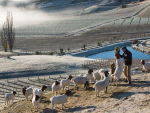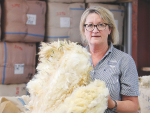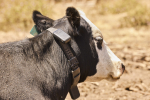OPINION: Otago farmer and NZ First MP Mark Patterson is humble about the role that he’s played in mandating government agencies to use wool wherever possible in new and refurbished buildings.
The sheep and beef farmer has been campaigning quietly and perhaps not so quietly for many years to wake up our public servants and get them to realise the amazing properties of wool.
While the same government agencies have promoted ‘green’ programmes, it seems that wool was never on the agenda and that synthetic products represented better value. A strange and bizarre attitude, one would think.
But the fact that wool has slipped down the pecking order as a preferred option for floor coverings and other uses is not entirely the fault of the public service. Who was it that disestablished the NZ Wool Board in 2003 and who voted against the wool levy in 2009? It was farmers!
They can hardly grizzle about the consequences of their decision which left wool in a neutral or limbo state while the synthetic companies upped the ante and took up the gap left by wool. Perhaps the past wasn’t all that bad. If farmers hadn’t made these decisions in 2003 and 2009 would things have been different? Who knows.
But moving on, Patterson, who is Associate Minister for Agriculture and Minister for Rural Communities, deserves credit for taking a giant step forward by educating public servants and setting an example to the private sector that using wool is the right thing to do.
Its environmental properties have been known for generations and hopefully new innovative products – not just carpet – will be used more widely. Wool pillows for example are beautiful and the use of wool for acoustic purposes makes sense.
What’s more, wool should be an income earner for sheep farmers – not a cost as it is for some. Whatever happens, Patterson and the NZ First team have at least raised the profile of wool to a new level and long may it continue to rise.



















